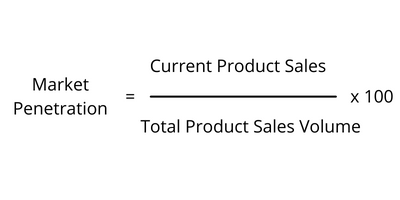Whenever a company looks to penetrate a market with a new product or service, it utilizes a strategy. This strategy is known as market penetration strategy, and companies can use it to estimate the total size of a particular market.
Market penetration is expressed in percentages. A company determines the total size of a market and comes up with a strategy to seize a certain percentage of the market. Market penetration is commonplace in modern business. By formulating a strategy, companies can also determine the total percentage of an untapped market.
How Does A Market Penetration Strategy Work?
To further elaborate on what a market penetration strategy is, we have to look at how it works. Let’s take the solar panel market as an example.
Solar energy is becoming increasingly popular. But what is most impressive about solar energy is the sheer potential. There is a whole market for solar companies to explore. According to Sunbadger, only 16 million homes in the US have solar panels. In a country with 139 million homes, the market penetration for solar panels in the US is 11.5%. That leaves 88.5% of the market untapped.
By using a market penetration strategy, a solar company knows exactly how much of the market is free for grabs. Companies benefit from market penetration as it lays out the important numbers of an industry. Going back to the solar industry, a solar company knows that 88.5% of the US population doesn’t use solar panels.

How Do Companies Penetrate the Market?
Every company dreams of being a market leader within an industry. But to do that, they have to have the highest market penetration for that product or service. So how do companies get there? The easiest market penetration strategy is to lower the price of your products.
The market leader is backed up by reputation and by being a brand name. That gives the market leader quite an advantage over a smaller competitor in almost every department. While a smaller competitor can lower prices, a market leader can increase them. Also, the leader controls the most market share. What this means is that they can dictate terms with retailers since more buyers are interested in their products.
Penetrating a market takes a lot of effort. A smaller competitor has to spend money to make money. That means they have to spend a lot of money on advertisements. From television ads to social media and client outreach, a competitor has to tap into the untapped market to increase their own market share. Advertising is a form of investing strategy where a company must advertise to increase its penetration rate.
By following the sales numbers, a smaller competitor can determine its market penetration and penetration rate. The result can vary, meaning it doesn’t always show positive results. Based on the results, a company might see its market share increase or decrease.

How To Come Up With A Viable Market Penetration Strategy?
A market penetration strategy is the best way to grow your business. Although such a strategy carries little risk, successfully launching a strategy can be difficult. Thus, companies need to know how to come up with a market penetration strategy.
For that, companies can use one or more of the following tactics:
These are all viable tactics and companies oftentimes use a combination to get the desired results.
- Lowering prices to lure customers
- Raising prices
- Acquiring a competirot
- Increasing brand awareness
- Making changes to your product so that customers can see the value
- Developing a new product to lure customers
Conclusion
A market penetration strategy is a valuable tool to increase a product’s market share. It can also be used to determine the total market of an industry and identify the total market penetration of a company’s product within that industry. By employing a series of tactics, a company can penetrate a market and increase its penetration rate.






